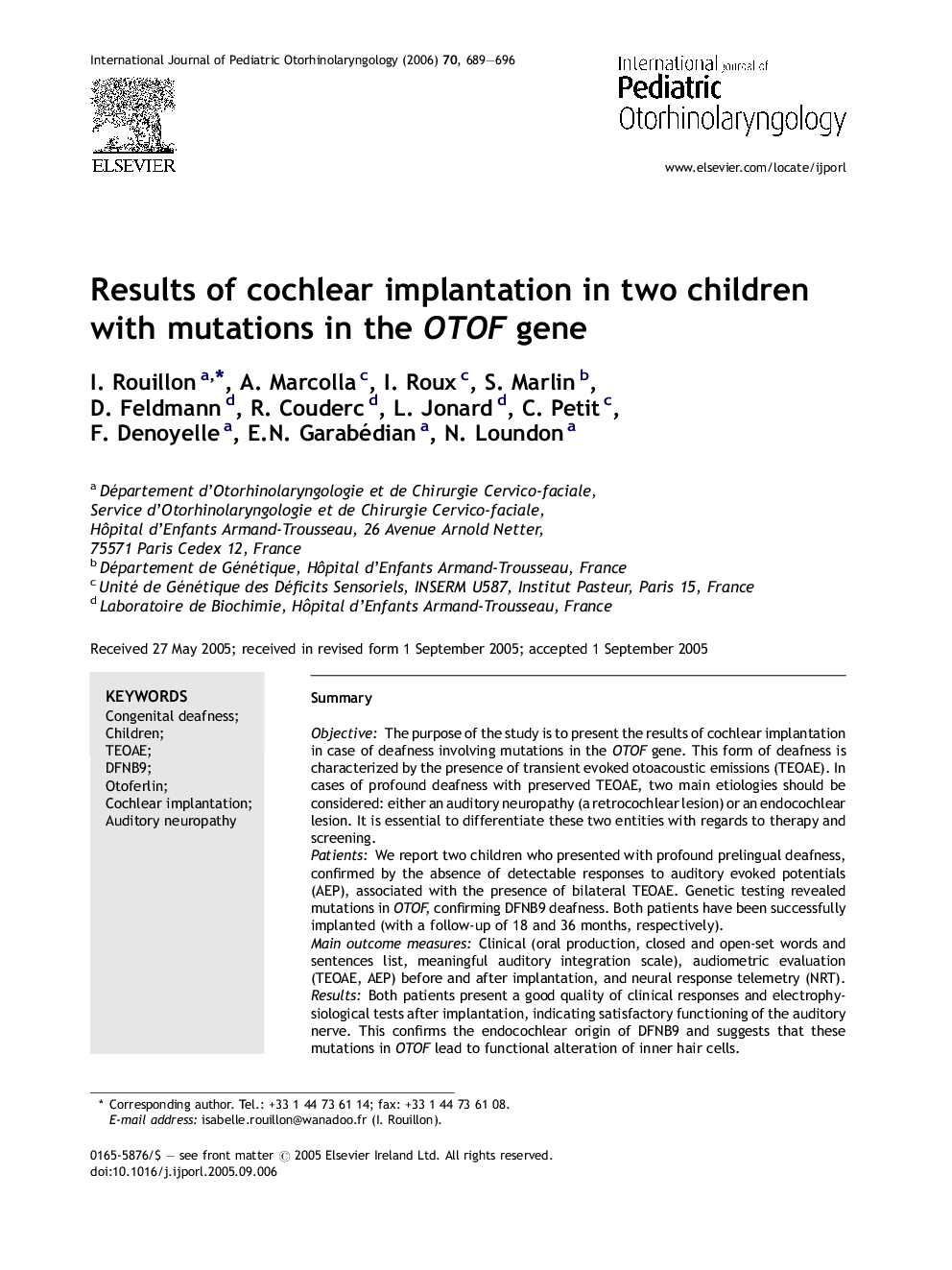| Article ID | Journal | Published Year | Pages | File Type |
|---|---|---|---|---|
| 4114756 | International Journal of Pediatric Otorhinolaryngology | 2006 | 8 Pages |
SummaryObjectiveThe purpose of the study is to present the results of cochlear implantation in case of deafness involving mutations in the OTOF gene. This form of deafness is characterized by the presence of transient evoked otoacoustic emissions (TEOAE). In cases of profound deafness with preserved TEOAE, two main etiologies should be considered: either an auditory neuropathy (a retrocochlear lesion) or an endocochlear lesion. It is essential to differentiate these two entities with regards to therapy and screening.PatientsWe report two children who presented with profound prelingual deafness, confirmed by the absence of detectable responses to auditory evoked potentials (AEP), associated with the presence of bilateral TEOAE. Genetic testing revealed mutations in OTOF, confirming DFNB9 deafness. Both patients have been successfully implanted (with a follow-up of 18 and 36 months, respectively).Main outcome measuresClinical (oral production, closed and open-set words and sentences list, meaningful auditory integration scale), audiometric evaluation (TEOAE, AEP) before and after implantation, and neural response telemetry (NRT).ResultsBoth patients present a good quality of clinical responses and electrophysiological tests after implantation, indicating satisfactory functioning of the auditory nerve. This confirms the endocochlear origin of DFNB9 and suggests that these mutations in OTOF lead to functional alteration of inner hair cells.ConclusionIn the absence of a context of neurological syndrome, the combination of absent AEP and positive TEOAE should lead to a genetic screening for mutations in OTOF, in order to undertake the appropriate management.
